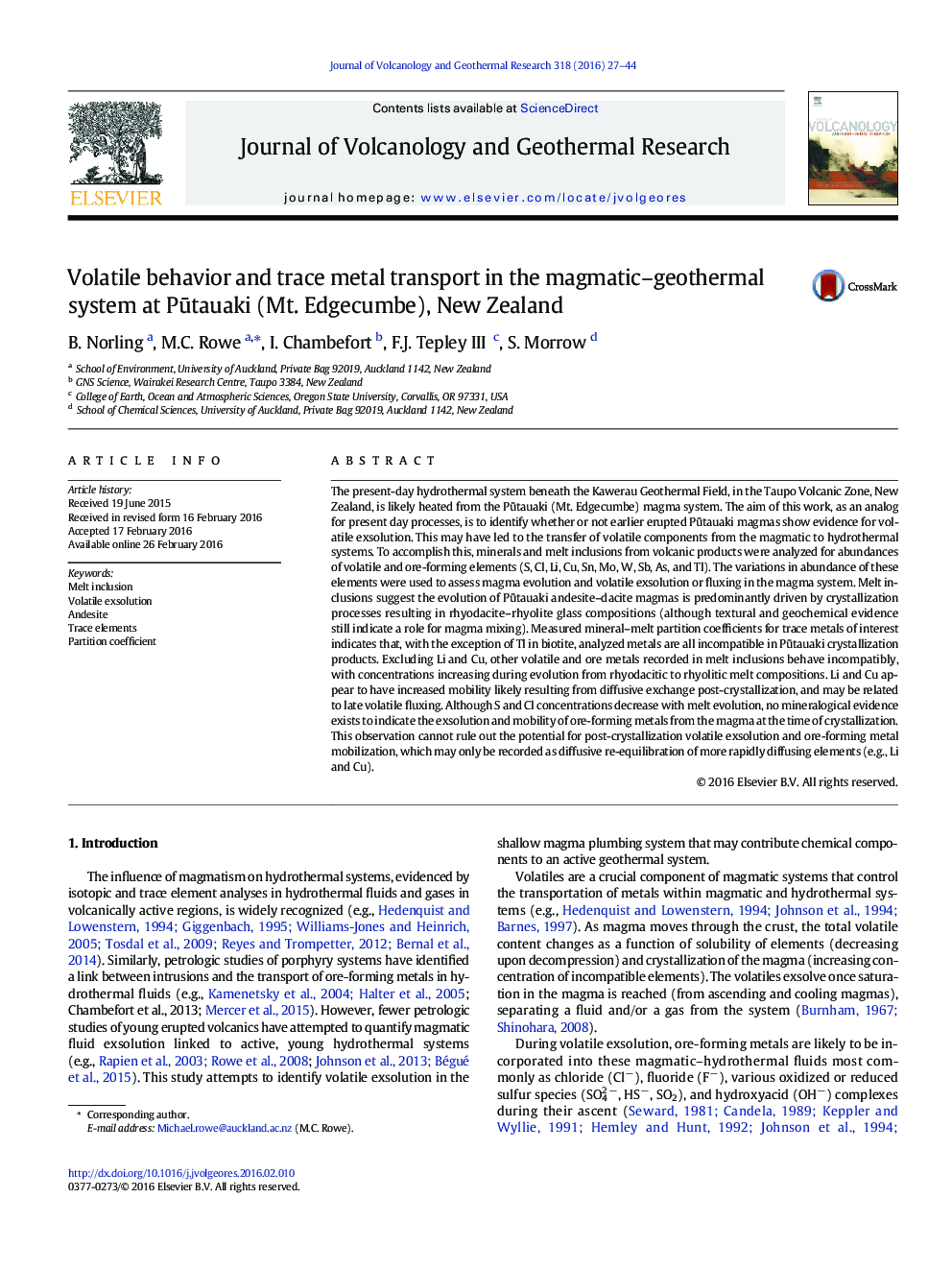| کد مقاله | کد نشریه | سال انتشار | مقاله انگلیسی | نسخه تمام متن |
|---|---|---|---|---|
| 4712699 | 1638304 | 2016 | 18 صفحه PDF | دانلود رایگان |

• Geochemistry indicates Pūtauaki petrogenesis is fractional crystallization dominant.
• Volatile (As, Sb, Tl) and ore (Sn, Mo, W) metals behave incompatibly.
• Volatile and ore-metals did not exsolve during shallow crystallization and degassing.
• Variability of Li and Cu may indicate post-crystallization volatile fluxing.
The present-day hydrothermal system beneath the Kawerau Geothermal Field, in the Taupo Volcanic Zone, New Zealand, is likely heated from the Pūtauaki (Mt. Edgecumbe) magma system. The aim of this work, as an analog for present day processes, is to identify whether or not earlier erupted Pūtauaki magmas show evidence for volatile exsolution. This may have led to the transfer of volatile components from the magmatic to hydrothermal systems. To accomplish this, minerals and melt inclusions from volcanic products were analyzed for abundances of volatile and ore-forming elements (S, Cl, Li, Cu, Sn, Mo, W, Sb, As, and Tl). The variations in abundance of these elements were used to assess magma evolution and volatile exsolution or fluxing in the magma system. Melt inclusions suggest the evolution of Pūtauaki andesite–dacite magmas is predominantly driven by crystallization processes resulting in rhyodacite–rhyolite glass compositions (although textural and geochemical evidence still indicate a role for magma mixing). Measured mineral–melt partition coefficients for trace metals of interest indicates that, with the exception of Tl in biotite, analyzed metals are all incompatible in Pūtauaki crystallization products. Excluding Li and Cu, other volatile and ore metals recorded in melt inclusions behave incompatibly, with concentrations increasing during evolution from rhyodacitic to rhyolitic melt compositions. Li and Cu appear to have increased mobility likely resulting from diffusive exchange post-crystallization, and may be related to late volatile fluxing. Although S and Cl concentrations decrease with melt evolution, no mineralogical evidence exists to indicate the exsolution and mobility of ore-forming metals from the magma at the time of crystallization. This observation cannot rule out the potential for post-crystallization volatile exsolution and ore-forming metal mobilization, which may only be recorded as diffusive re-equilibration of more rapidly diffusing elements (e.g., Li and Cu).
Journal: Journal of Volcanology and Geothermal Research - Volume 318, 15 May 2016, Pages 27–44